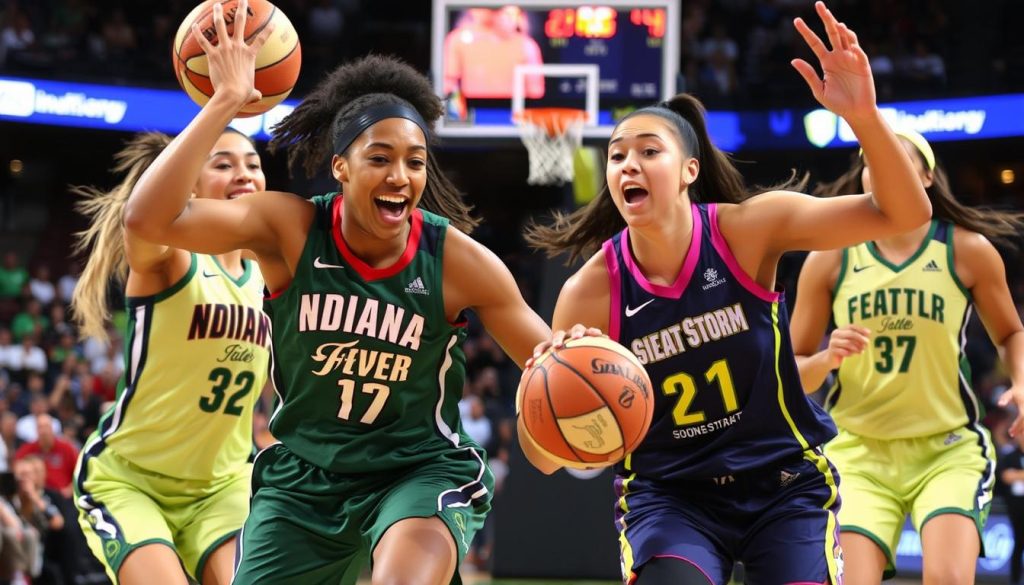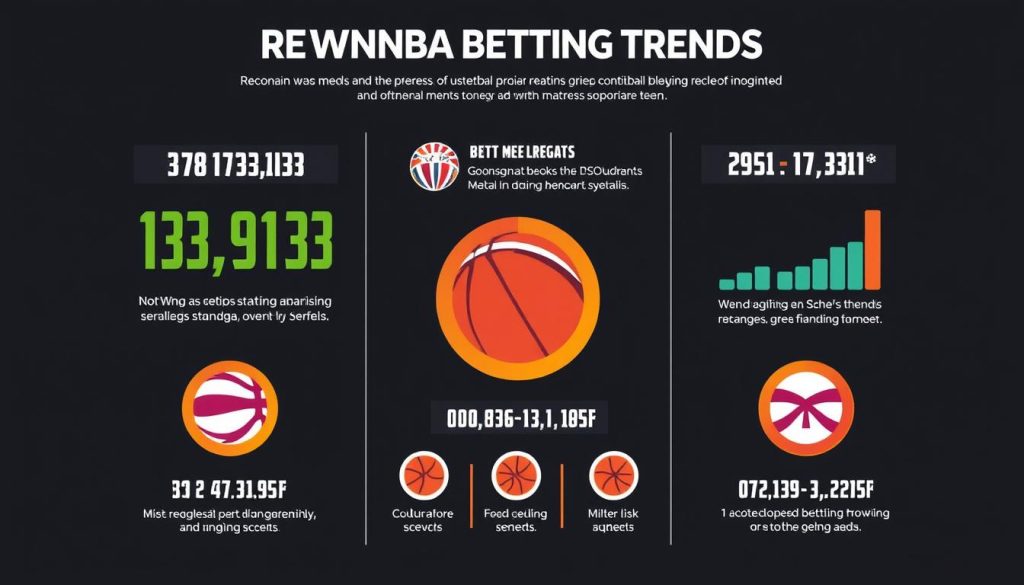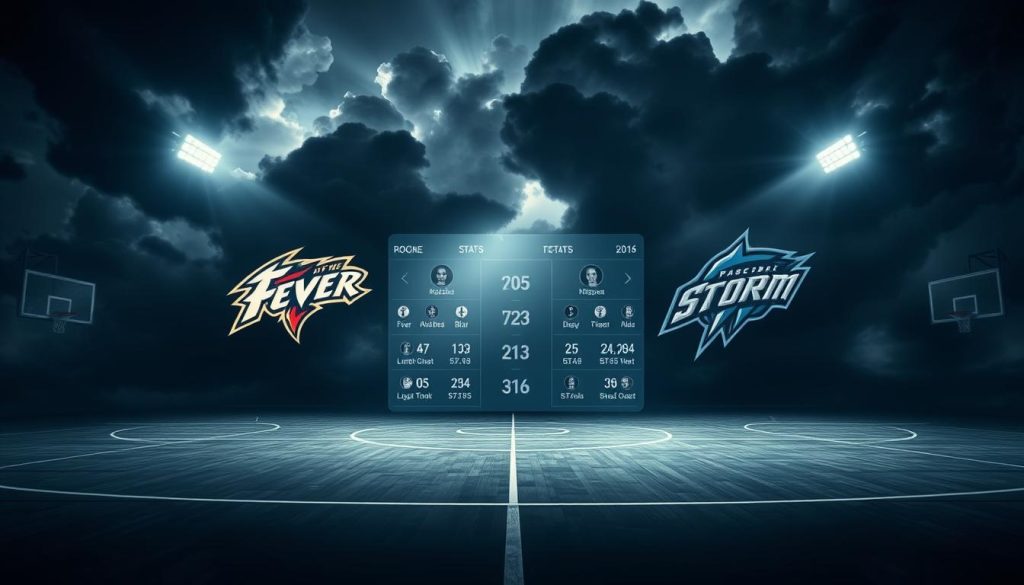The Indiana Fever and Seattle Storm have been formidable opponents in the WNBA, engaging in numerous thrilling matchups that have captivated basketball enthusiasts. Their rivalry is a testament to the competitive spirit of women’s professional basketball.
The dynamic between these two teams is characterized by exceptional player performances and strategic team play. Advanced stats reveal intriguing insights into their head-to-head battles, showcasing the talent and determination of players on both sides.
As we delve into the history of their encounters, it becomes clear that the Fever and Storm have significantly influenced the WNBA landscape. Their games are not just about winning or losing; they’re about the display of skill and sportsmanship.
Key Takeaways
- The Indiana Fever and Seattle Storm have a rich history of competition in the WNBA.
- Statistical analysis reveals key player performances that have impacted their matchups.
- The rivalry between the two teams has contributed to the growth and popularity of women’s basketball.
- Advanced stats provide valuable insights into team strategies and player strengths.
- The head-to-head results between Fever and Storm are closely watched by fans and analysts alike.
Understanding the Rivalry: Indiana Fever vs Seattle Storm
The Indiana Fever and Seattle Storm, both with storied pasts, have carved out a significant rivalry in women’s basketball. This rivalry is not just about the teams; it’s about the iconic players who have shaped their histories and the league as a whole.
Team Histories and Backgrounds
The Indiana Fever established themselves as a formidable force in the WNBA after joining the league, building their reputation through consistent playoff appearances and championship contention. The team has been home to notable players who have contributed significantly to their success.
Seattle Storm’s rich history includes multiple championship titles, showcasing their dominance as one of the most successful franchises in women’s basketball. The Storm have also featured legendary players who have left an indelible mark on the team and the WNBA.
Significance in the WNBA Landscape
The rivalry between the Indiana Fever and Seattle Storm has evolved over time, with key moments defining their competitive relationship. Both franchises have contributed to the growth and popularity of women’s sports, particularly basketball, in the American sports ecosystem.
Statistical data tracking the historical performance of both teams reveals patterns in their development and competitive cycles within the WNBA landscape. Analyzing these data points provides insight into the teams’ strategies and performances over the years.
Head-to-Head Analysis: Fever vs Storm

Analyzing the head-to-head record between the Fever and Storm reveals intriguing trends and patterns. Their matchups have been closely contested, with both teams showcasing their strengths and weaknesses.
Recent Game Results and Trends
Recent matchups between the Fever and Storm have demonstrated evolving tactical approaches, with game results showing distinct patterns. The data indicates that home vs. away performance has been a significant factor, with certain teams performing better in their home arenas. For instance, on Jun 22, 2025, the Fever won against NY with a score of 89-79 at home, while they lost to LAV with a score of 81-89 when away.
Statistical Comparison of Recent Matchups
The statistical comparison of recent matchups highlights key differences in scoring efficiency, defensive performance, and rebounding. Player matchups have significantly influenced the head-to-head results, with star players elevating their performance in high-stakes contests. The Fever and Storm have shown varying levels of success against each other, with the spread coverage statistics offering insights into the competitiveness of these matchups.
Performance Metrics Breakdown
Analyzing the Indiana Fever and Seattle Storm’s past matchups reveals key performance metrics that differentiate these two WNBA teams. By examining various statistical categories, we can gain a deeper understanding of their strengths and weaknesses.
Shooting Percentages and Scoring Efficiency
The Fever and Storm have shown distinct shooting percentages, with the Fever achieving a field goal percentage (FG%) of 48.57 and the Storm at 42.68. Effective field goal percentage is a crucial differentiator in their matchups.
- Advanced statistical tools highlight the differences in shooting percentages.
- Field goal efficiency is a key factor in determining the outcome of their games.
Defensive Statistics and Rebounding
Defensive metrics show that both teams employ unique strategies to disrupt opponent offenses, reflecting their roster composition and coaching philosophy. Rebounding differential has been a critical factor in determining the outcome of Fever vs. Storm contests.
- Rebounding differential strongly correlates with victory.
- Each team has a distinct defensive approach.
Three-Point Shooting and Free Throw Comparisons
Three-point shooting has become increasingly important in the modern WNBA. The Storm have made 8 three-pointers on average, compared to the Fever’s 6. Free throw percentages also vary, with the Fever at 77.78% and the Storm at 73.33%.
- Three-point shooting is a critical aspect of their perimeter game.
- Free throw attempt rates reveal patterns about each team’s ability to draw fouls.
Betting and Prediction Analysis for Fever vs Storm Games

The Indiana Fever vs Seattle Storm rivalry offers a unique opportunity for bettors to leverage data and trends. Understanding the betting lines, historical performance, and total points trends can significantly enhance betting strategies.
Understanding the Betting Lines and Spreads
Betting lines for Fever vs Storm matchups have shown interesting patterns. The lines have varied, with one team being favored by -1.5 and the other by -3.5. Savvy bettors can leverage these patterns to make informed picks.
Historical ATS (Against The Spread) Performance
Historical ATS performance data reveals that one team has been more reliable for covering the spread. This data provides valuable insights for spread betting strategies, helping bettors make more informed decisions.
Total Points Trends and Predictions
Total points trends in these matchups often diverge from season averages, creating opportunities for over/under bettors. With totals ranging from 160.5 to 171.5, understanding these trends is crucial for making successful bets.
Advanced betting tools and predictive models have become essential for handicapping these games effectively. By leveraging data-driven approaches, bettors can achieve better results than relying on intuitive picks.
Key Factors That Determine the Outcome of Fever vs Storm Matchups
The rivalry between Indiana Fever and Seattle Storm is influenced by several key factors that can significantly impact the game’s outcome.
Home Court Advantage Impact
Home court advantage has proven to be statistically significant in Fever vs Storm matchups, with game logs showing distinct performance patterns based on venue.
Star Player Performance
Star player performance metrics reveal how individual brilliance can override team-level statistics, particularly in close games where clutch shooting becomes decisive.
Coaching Strategies and Adjustments
Coaching adjustments between regular season and playoff matchups demonstrate the tactical chess match that defines this rivalry at its highest level. Advanced basketball analytics tools and social media sentiment analysis have also transformed how we evaluate these matchups.
The integration of college basketball statistical models and betting services’ specialized tools for Fever vs Storm games has created new dimensions for understanding these contests. Factors like climate pledge initiatives and World Cup scheduling have subtle but measurable impacts on performance metrics.
FAQ
What is the history of the Indiana Fever and Seattle Storm rivalry?
The Indiana Fever and Seattle Storm have been competing in the WNBA since their respective inceptions, with the Fever starting in 2000 and the Storm in 2000 as well. Their rivalry has grown over the years, with both teams having experienced periods of success.
How do the Fever and Storm compare in terms of recent performance?
Recent game results show that both teams have had their share of wins and losses. The Storm have shown a strong home record, while the Fever have been consistent on the road. Analyzing their recent trends can provide insight into their upcoming matchups.
What are the key statistics to look at when comparing the Fever and Storm?
Key statistics include shooting percentages, scoring efficiency, defensive ratings, rebounding margins, and three-point shooting percentages. These metrics can help determine which team has a competitive edge in their matchups.
How do betting lines and spreads work for WNBA games like Fever vs Storm?
Betting lines and spreads are set by sportsbooks to give bettors a way to wager on the outcome of games. The spread is the predicted score difference between the two teams, and bettors can choose to bet on either team covering the spread or the total points scored.
What factors determine the outcome of a Fever vs Storm game?
Factors such as team chemistry, coaching, player injuries, and recent form can all impact the outcome of a game. Additionally, head-to-head matchups and statistical trends can provide valuable insights.
Where can I find the latest data and stats for the Indiana Fever and Seattle Storm?
The official WNBA website, sports news outlets, and statistical databases like Basketball-Reference.com provide up-to-date data and stats for both teams.
How can I stay up-to-date with the latest news and updates on the Fever and Storm?
Following the teams on social media, signing up for their newsletters, and checking sports news websites can help you stay current with the latest developments.



